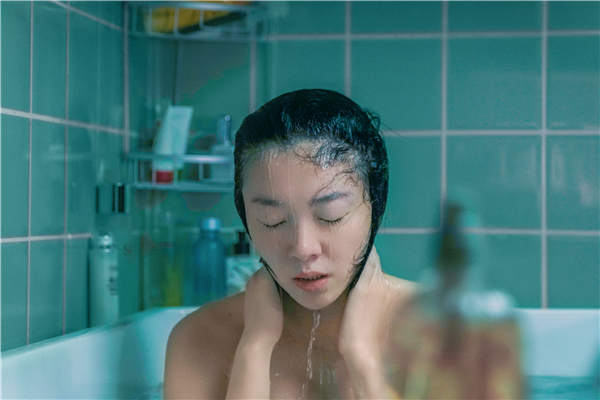

After shooting to fame in the 1998 hit costume drama My Fair Princess, Zhao-then 22-has achieved incredible popularity, captivating numerous fans with her looks and big eyes. However, she surprisingly harbored doubts about her appearance.
Jin recalls: "Zhao previously asked: 'Do you think that my eyes are too big and make me look like a cartoon character?' For quite a long time in her early 20s, she was worried that her appearance would see her being typecast and reduce her chances of receiving quality scripts."
Zhao's first episode recounts a woman's almost morbid pursuit of "prettiness" whereby she spends nearly three hours every day on the application of heavy makeup while considering the benefits of cosmetic surgery.
"Many Chinese women pursue the appearance of a slender, fair-skinned, youngster. But why should women follow these 'criteria'? We wish women could be more confident in their own looks and brave enough to challenge biased aesthetics," says Jin.
Midlife crises are another major topic discussed in one episode directed by poet-turned-director Yin Lichuan. Yong Mei, a Berlin film festival Golden Bear-winning actress, translates the stress and trauma of a middle-aged woman who sacrifices her career to support the family as a full-time housewife. Despite living a humble and obedient life, she is abruptly notified that her husband wants a divorce and is then separated from her daughter.
Jin says the tale attempts to raise public awareness about the underappreciated dedication of housewives, many of whom are highly educated.
The episode, shot in Beijing last summer, used a special method to create smog to portray a "distressed" atmosphere. "We purchased a big bag of coffee beans and recruited a man to stir-fry the beans. All of us breathed in so much coffee that we stayed up the whole night filming," recalls Jin.
Unlike the original British show, in which each episode employs the same setting, similar to a stage show backdrop, Hear Her adopts a comparatively more complex filming technique, including diversifying locations for each episode to give the content a more movie-like quality, says Jin.
